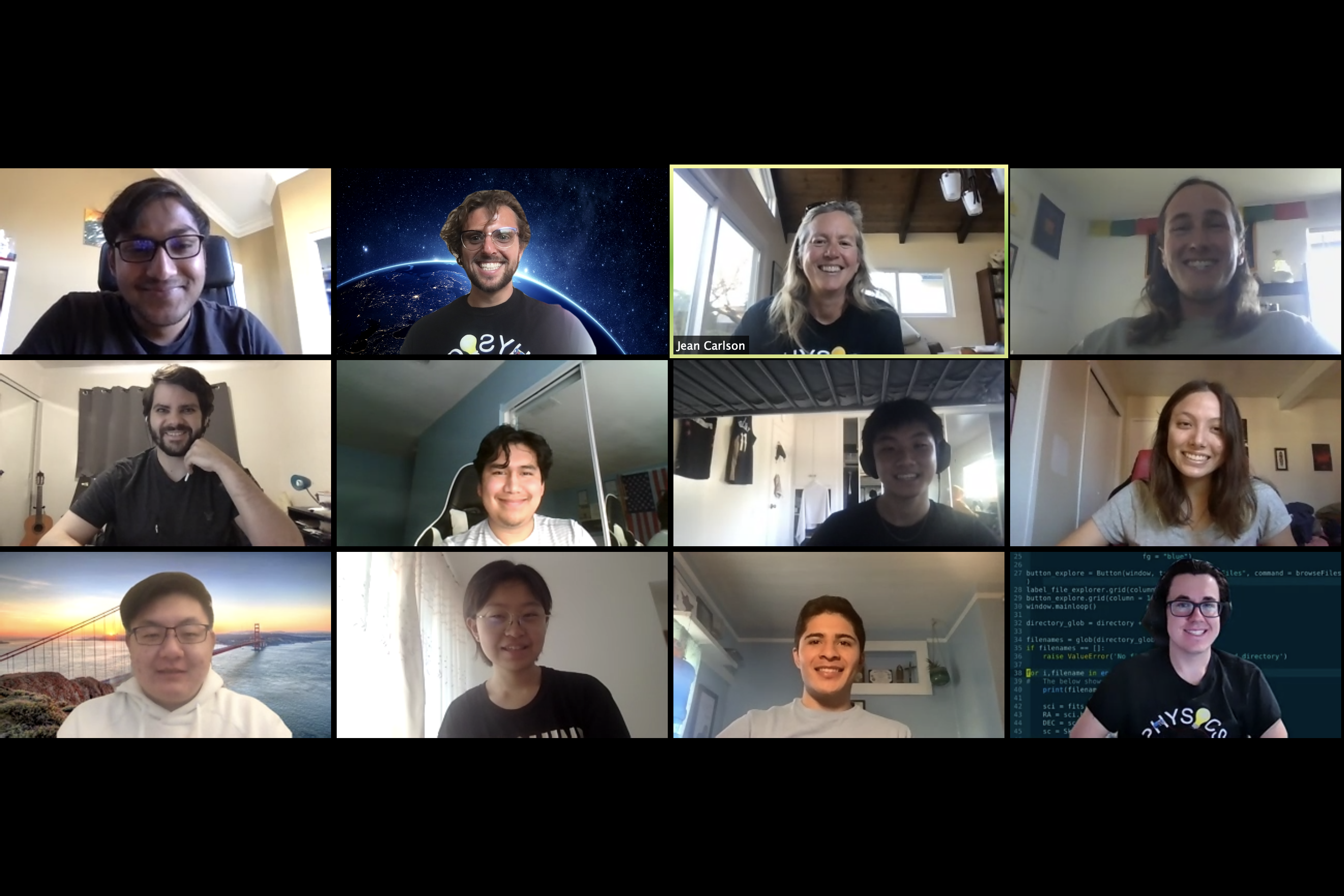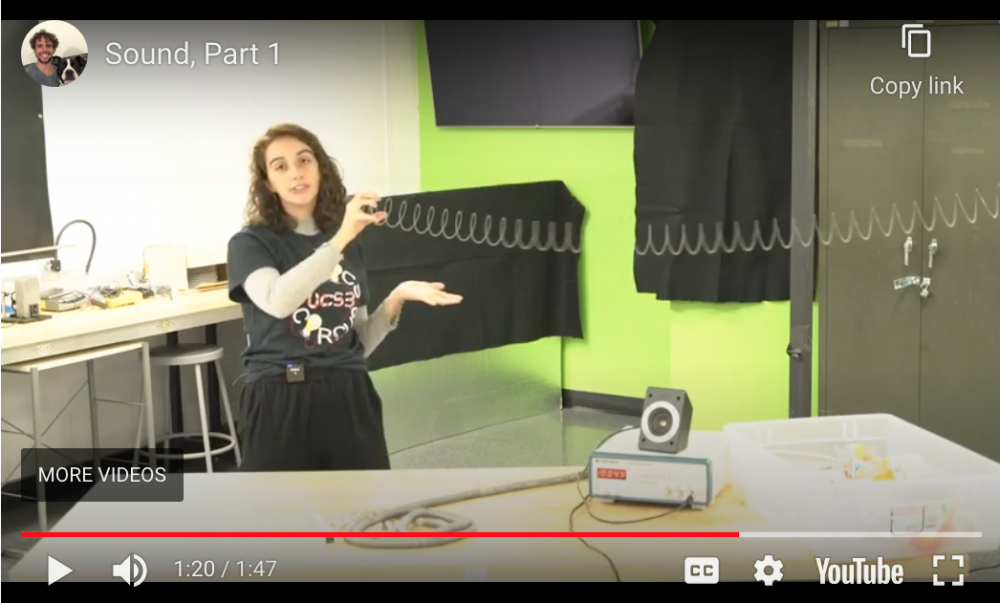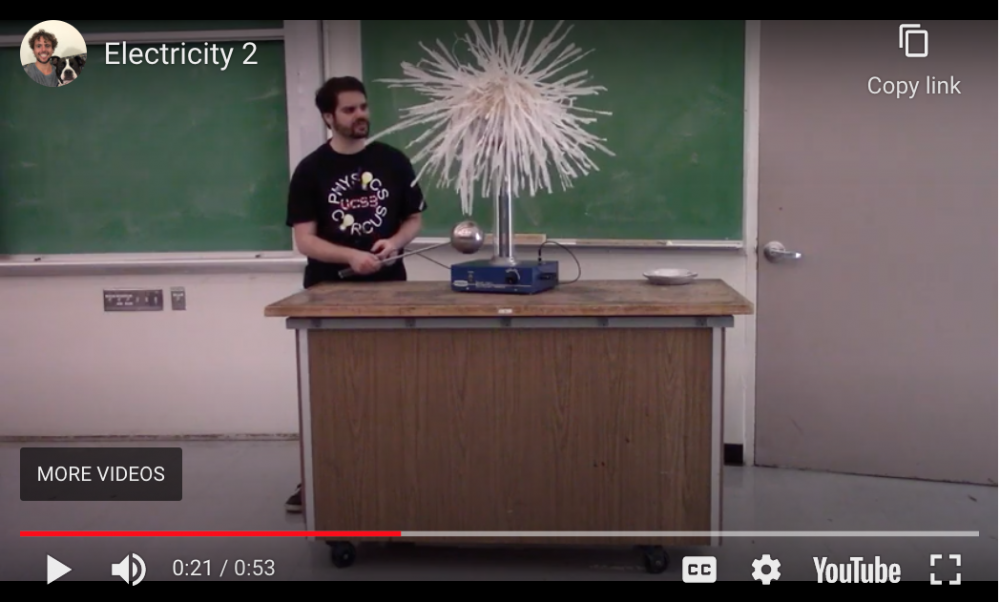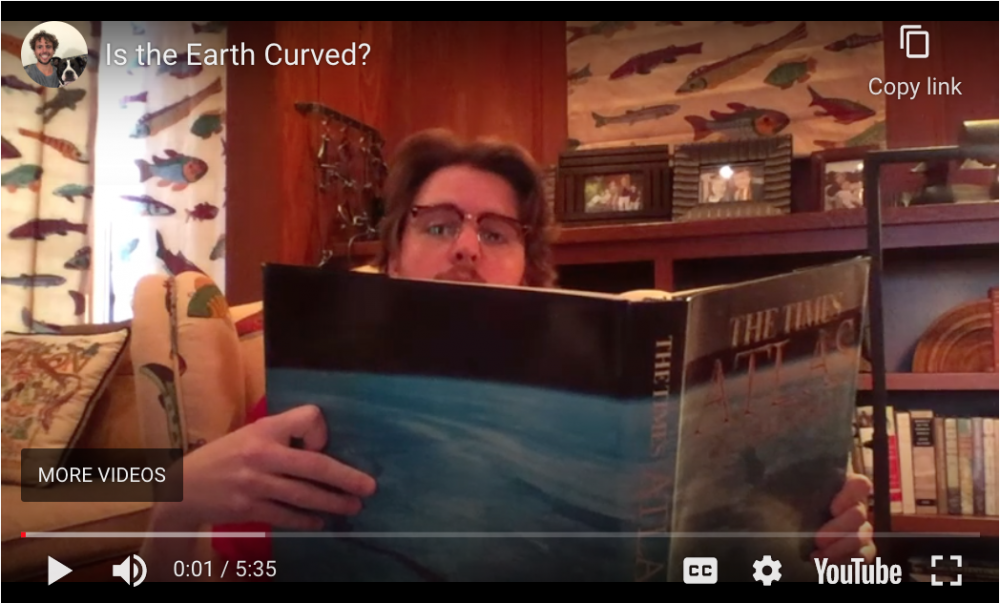Come One, Come All
When the COVID-19 pandemic hit, teachers everywhere found themselves dealing with the challenge of reaching students in spite of the lockdowns and social distancing rules that abruptly split classrooms apart.
Such was the case for the volunteers behind Physics Circus, an interactive science outreach program offered to school-aged children by the university’s Department of Physics. Typically presented on site at local elementary schools as an assembly demonstration show or as part of an after-school family science night, Physics Circus and its cadre of hardworking and enthusiastic students were suddenly cut off from their audience, stifled in their ability to bring physics to the kids.
“We wanted to bring the science alive,” said Michael Zimet, a graduate student in dynamical neuroscience and the circus’ current coordinator. “We wanted to have it be something where the kids can play hands-on.” Instead, everybody was separated and isolated.
Still, the great thing about physics is that it exists everywhere, always. So with a bit of creativity and ingenuity the group overcame the limitations of space and time and took the science roadshow online. Made-for-Zoom sessions and a revamped website complete with video demonstrations and a growing list of home experiments kids can conduct brings physics to life, wherever they are.
“We really want to spark the creativity, exploration and delight,” Zimet said. “We want the kids to recognize the reality that science doesn’t just live in textbooks. It’s how we interact with the world.”
With their new website the Physics Circus volunteers developed a versatile set of tools for teaching and learning physics, adaptable to the variety of circumstances the pandemic can throw at them. In the demonstrations, graduate students Jared Goldberg and Molly Kaplan lead the audience through some basic, viewer-friendly principles of physics.
“We’ve had these seven classic demonstrations that the Physics Circus has done for decades,” Zimet said of the videos that discuss subjects like momentum, sound and electricity. “But the home experiments are new, and their development was totally open-ended for the volunteers.”
In the home experiments, the volunteers instruct viewers to perform investigations using everyday objects. Got some soap and a paperclip? Check out Max Prichard’s surface tension experiment. Have a latex balloon in your junk drawer? Now you can learn about how electrons work with Sabrina Brickner.
“The website is designed so that kids can explore physics on their own,” said Jean Carlson, a longtime Physics Circus faculty advisor. “Some of the schools have shared the website with parents, so they can get all the families involved in it.” In the live Zoom sessions, UCSB student volunteers combine live presentations of scientific concepts with segments of the video demonstrations and engage the kids by asking and answering questions in real-time.
“Part of the success of the program is just getting the UCSB students in contact with the kids,” Carlson said. The bonus is that the lessons and experiments are accessible online even after the live session ends.
And the format works. Not only do the kids learn physics, Carlson said, they also express curiosity about how to become scientists — something they were less likely to do during the in-person format when demonstrations were the main focus and crowd sizes were much larger.
“They ask us, how old are you? What made you want to be a scientist? What was your first science experiment?” she said. “We learn a lot from the kids, and we open up about ourselves. It’s really fun that way!” The student presenters also get valuable practice in relating science to the public.
“Additionally,” Zimet said, “the online nature of the new Physics Circus website provides a much broader platform for community outreach.” With this new format, the program will be able to visit schools without being constrained by travel. “Another opportunity now that we have this website is that we can share it broadly with schools outside our area,” he said.
Looking ahead, the troupe of student physicists looks forward to returning to live demonstrations on site at local schools, which they intend to resume as UCSB reopens. Elementary schools in the area reopened March 1, but social distancing measures continue to dictate the size of classes and the hours the kids come to school. Additionally, individual classes are still subject to quarantine measures in the event someone comes down with COVID-19, so it looks like the online Circus has carved out a niche for itself.
“We’ll just have to see what the schools want to do once things get a little more back to normal,” Carlson said. “But this is a wonderful thing — whether we’re doing a Zoom event or whether we’re actually at the school — as a resource for the students to learn more and experiment on their own.”







